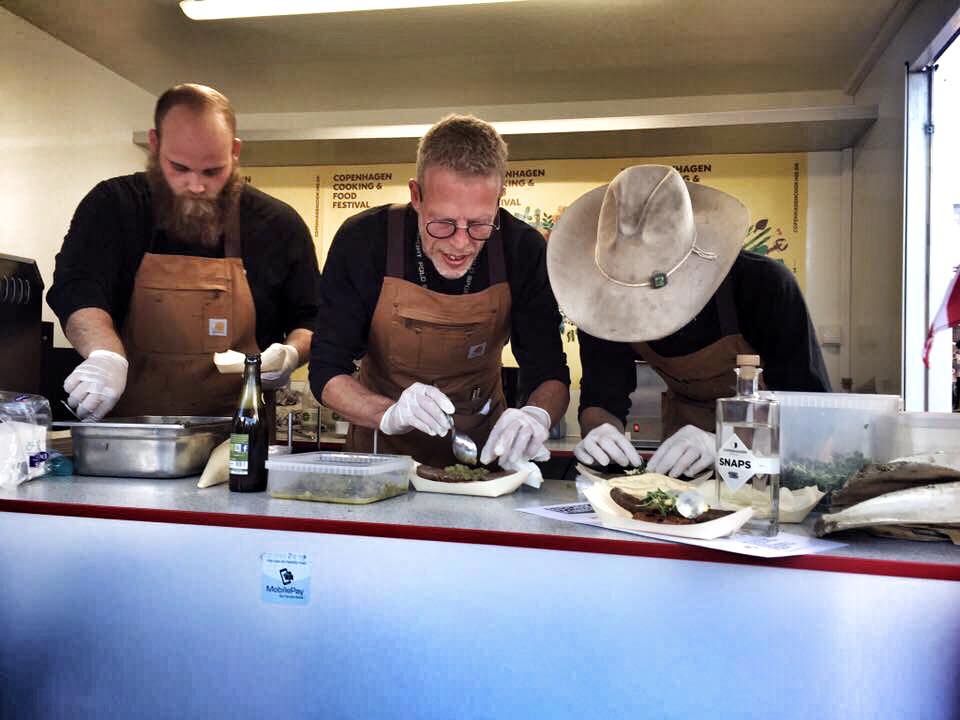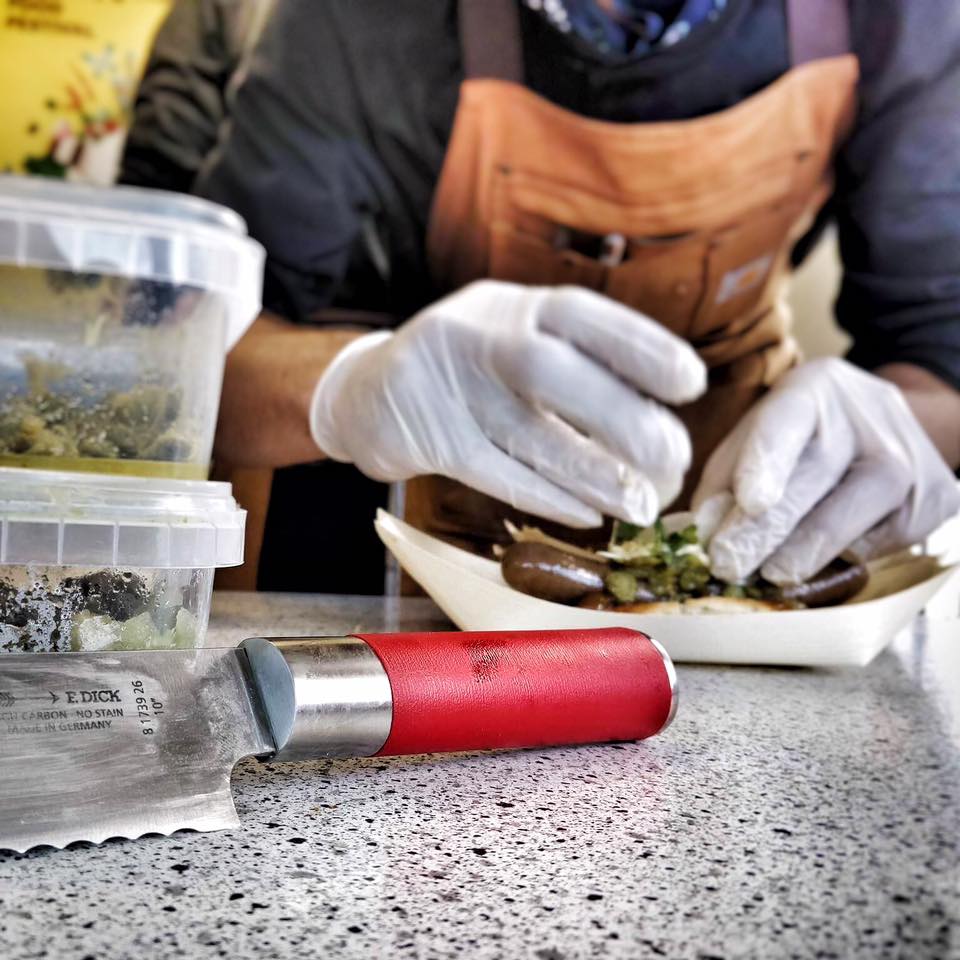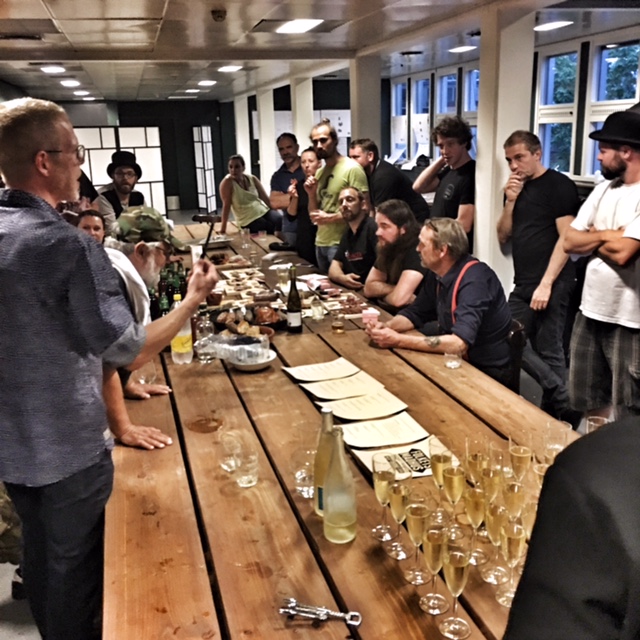I'll be the first to tell you; I was playing out of my league.
The six-team contest had some big names:
Team Sweden: Brothers Ebbe Vollmer and Mats Thulin Vollmer from Restaurang Vollmer (2 Michelin Stars) in Malmø. The duo is known for straightforward, down-to-earth cooking using their exquisite home-grown produce.
Team South Africa: Korbus van der Merwe from Wolfgat in Paternoster. Korbus's mission is to cook sustainably while using super-local produce and ingredients.
Team Japan: Hideto Takeda, Mads Battlefield, and Henrik Levinsen from Ichimatsu and Restaurant Hjemme, respectively.
Team Denmark: Jonas Boelt, executive chef at Great Northern Food Hall in New York. There, he created a hot dog the NY Post claimed to be the top dog in New York.
Team Spain: Juan Antonio Vargas, head chef of Mugaritz - 9th best restaurant in the world and owner of three Michelin stars.
Oh, and a butcher from Texas...
In the months before the competition, the Folkets Madhus team and I tried to scheme up the ultimate butcher's hotdog - for awhile; there was talk of all the toppings being made from offal with a touch of fresh blood foam. I decided to compete with a more traditional dog rather than blow everyone away with a butcher's hot dog that would horrify some and cause others to turn vegan. The key word here is more traditional - I still wanted to play around with this dog. For a few weeks, I tested hot dog bun recipes, trying to make something unique. I'm not sure where the idea came from, but I decided to add some dehydrated prosciutto to my dough - a recipe that I will come back to and tweak one day. It definitely has some potential!
In place of a Texas-styled sausage, I opted for a traditional Danish grillepølse that highlights Nordic spices and seasonings. I thought this selection exemplified the spirit of the Butchers' Manifesto - the passage of the craft from one generation to the next. With the help of Mads Cortsen, I topped the dog with caramelized onions, pickled green tomatoes, thinly slice glass kale, a mayonnaise, and watercress.
The day of competition, Michael, Gustav, and I gathered at Torvehallerne. After we had assembled our station in our little hotdog trailer, we pulled out a bottle of Michael's famous Bacon Snaps and went to meet our competition.
Initially, the idea was to take the other teams off their "game" with a few swigs, but after hitting five trailers, we agreed our plan had somewhat backfired!
At last, the competition started: we had to serve 100 identical hotdogs to festival goers and an additional six for the judges. I came a little over-prepared, and we pushed out over 150 dogs. We quickly became the crowd favorite.
Gustav, Michael, and I busy at work in our small hot dog trailer. Here, Gustav took our wieners out of hot water, placing it in our fresh toasted buns. Michael came along with the caramelized onions and green tomatoes and I finished them off with the mayo, glass kale, and garnish.
I relied heavily on all my F. Dick equipment for this contest - the bread knife was a work horse for those home-made buns!
Finally, the Master of Ceremonies called for all the chefs to come to the stage for the winning announcement. As I began to make my way out of the trailer, Michael he grabbed me by the shoulder.
"No, screw that! We don't move until they call for the butchers!"
He was right. This was our fight and that of the Butchers' Manifesto:
We are not chefs.
We are butchers.
In order to BRING BUTCHER BACK, we had to be recognized.
We held our ground. Shouts of "Vi Slagter!" ('We are butchers' in Danish) started to ring out from the crowd until finally, the "butchers" were called to the stage.
In the end, the top prize went to Team Japan, and rightfully so - their dog was killer. They loved Michael's Bacon Snaps so much that we gave them the rest of the bottle as an additional prize. You can see them celebrating with it on stage.
Team Japan taking the stage as the winning team of the Top Dog Charity contest - Congrats guys! Photo Credit: Copenhagen Food Festival.
,This was a great experience with lots of wonderful memories - we competed against some talented chefs. and were judged by some of the top chefs in the world. After the competition, I snuck over to the judge's table to get a picture with Ramus Kofoed, winner of the 2012 Bocuse d'Or - essentially, the Olympics of fine dining. Ramus also owns and operates Geranium, a three-star Michelin resturant in Copenhagen.
The experience was made possible by Michael Museth. It technically was a Butchers' Manifesto event, but he pushed for me to be on stage. For this, and all the other incredible opportunities he has given me, I am deeply appreciative.
SIDENOTE: A few weeks after the hotdog competition, Mads Cortsen competed in the Danish National Hotdog competition. His setup was hospital themed - he looked like a bloody surgeon while serving up his hotdogs and guess who got to make the buns?



































